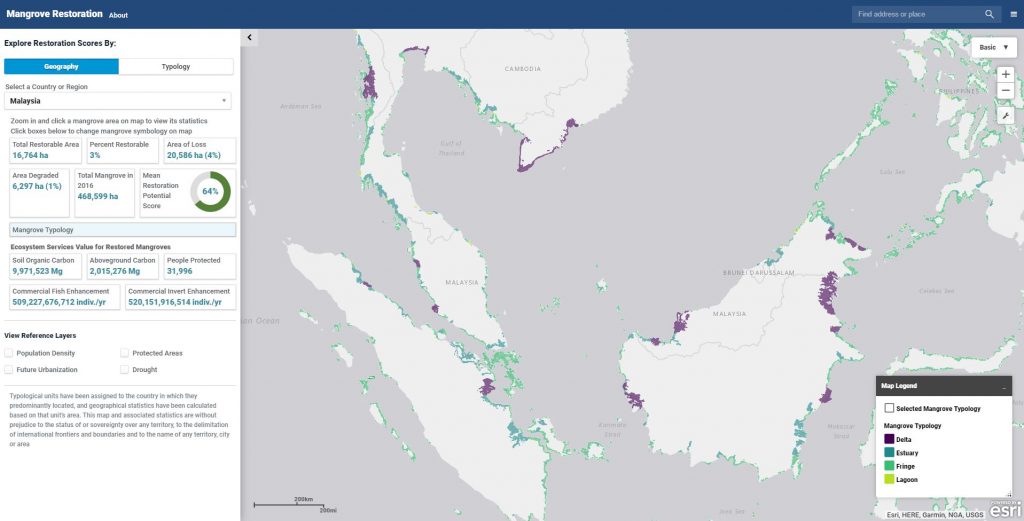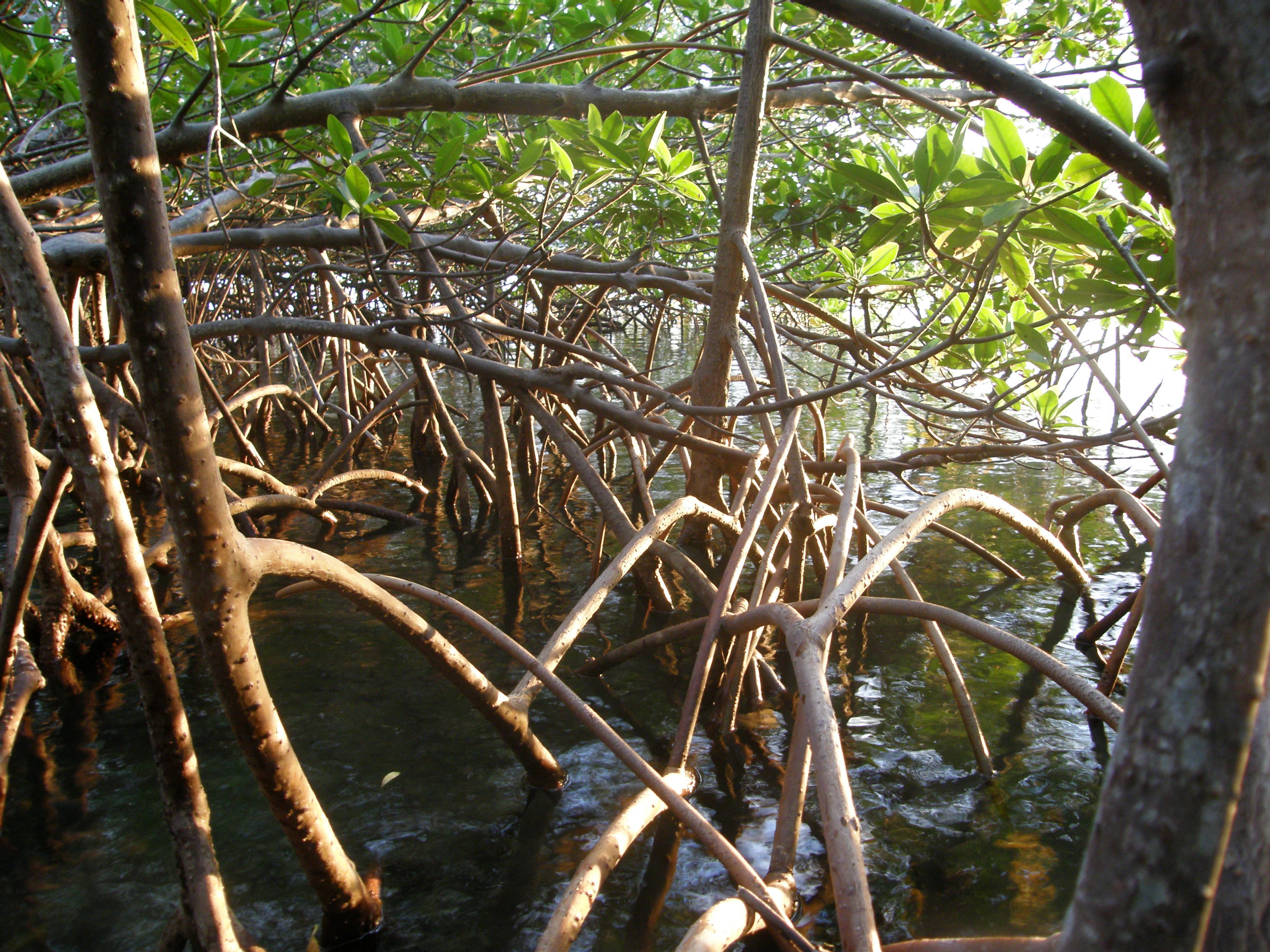Explore the Mangrove Restoration Potential Mapping Tool
Healthy mangroves are a precious, almost priceless resource, and yet over the past 50 years the world has witnessed staggering levels of mangrove loss and degradation. Mangroves can, quite literally save lives during storms, but losing mangroves also means losing livelihoods, food security, valuable timber, coastal defense and one of the most efficient and important carbon stores on the planet.
There are growing efforts to protect some of the world’s remaining mangroves and to curb the destruction of this key natural asset. Indeed, the losses are such that mangrove restoration is increasingly seen as a critical component of both conservation and shrewd coastal management – a genuine ‘win-win’ opportunity.
Successful restoration can support local communities, help countries to achieve targets for conservation and carbon emissions, and even help in the urgent fight to slow climate change. To support these efforts, The Nature Conservancy and IUCN, in collaboration with the University of Cambridge, developed the Mangrove Restoration Potential Map – a unique interactive tool designed to explore potential mangrove restoration areas world-wide, along the with the benefits association with such restoration.
The Mangrove Restoration Potential map can help countries to:
- Identify areas with potential for sequestering high amounts of carbon, and for avoiding further carbon losses from the soil of former mangrove areas;
- Predict the potential gains to fisheries from mangrove restoration in different locations
- Highlight places where the flooding of coastal populations may be reduced through restoration
- Support pledges on climate mitigation and adaptation actions as part of the Paris Agreement and NDCs
- Support pledges on the United Nations’ Sustainable Development Goal (SDG) 13 (Climate Action)
- Refine, as appropriate, the inclusion of mangrove restoration activities as part of national and sub-national REDD+ efforts
To use the mapping tool, please visit maps.coastalresilience.org/mangrove-restoration
To learn more about the project and find additional project resources, please visit Oceanwealth.org/mangrove-restoration

Photo credit: Mark Spalding


